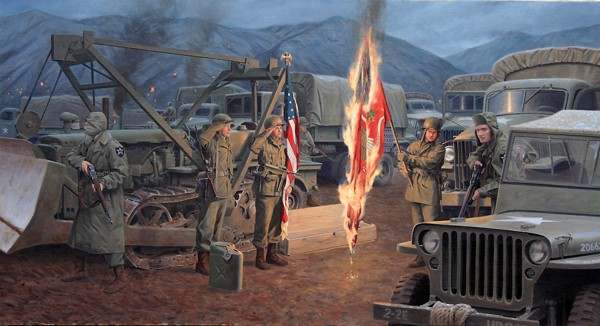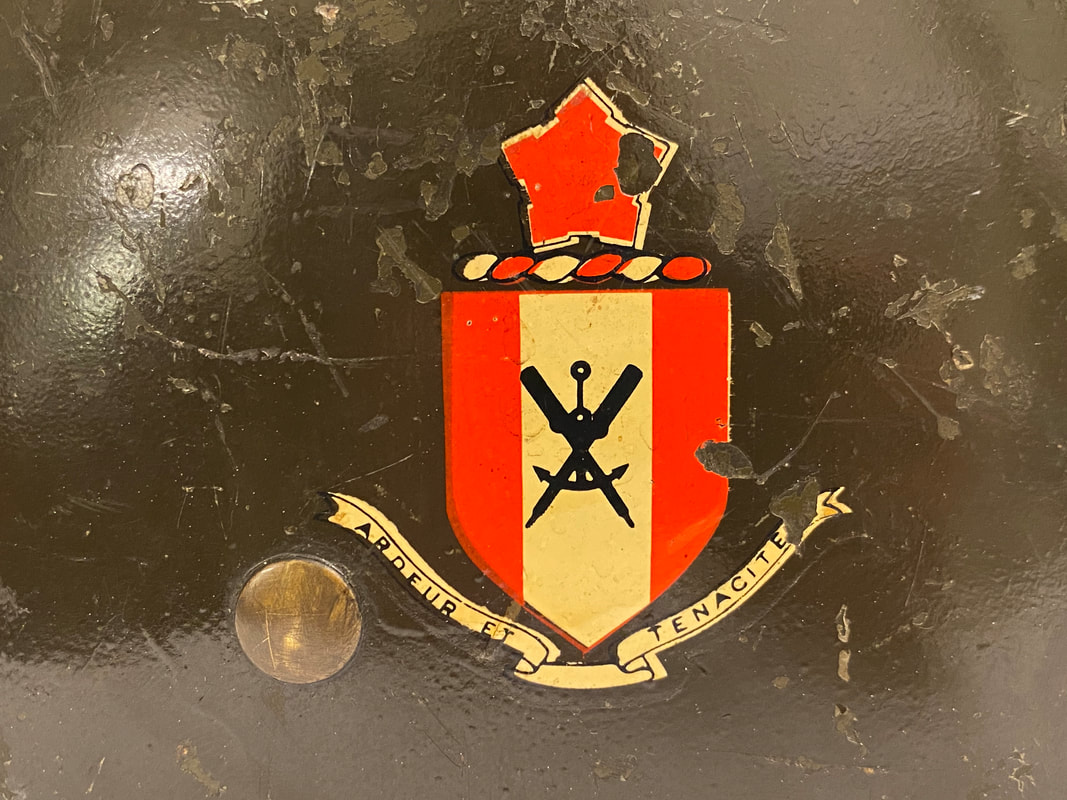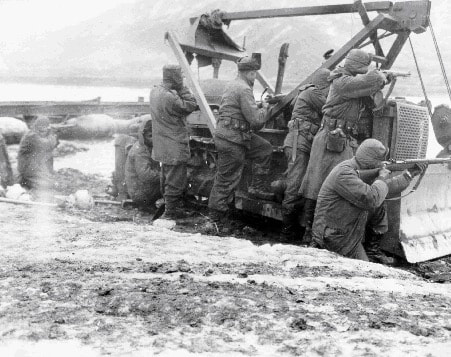|
On this day, November 30th 1950, the 2nd Engineer's battalion commander made a fateful decision -- he ordered the unit's colors, streamers, and their custom box to be doused in gasoline and burned. But why would an officer destroy the symbol that embodies his command? Click below to read more!
In late 1950, following the success of the Inchon landings and drive north by UN forces, China entered the war on the side of North Korea. The sea of Chinese manpower overwhelmed UN forces, and caused them to withdraw south on the peninsula to establish defensive positions.
But the 2nd Engineers rose from the ashes and were reconstituted as a combat unit for further participation in the Korean Conflict. They were eventually withdrawn from Korea in late 1954 and posted at Fort Lewis, WA before being deployed to Alaska in 1956. It is during this time period that Jay Freeman Wilfong volunteered for Army service. This is denoted by his service number RA 10550152. The prefix RA means "Regular Army", while the service number starting with 10-19 million indicates he was not a draftee (who would have received a number starting with 50 based on geographical region). The M1 helmet with Wilfong's name painted inside was produced by the McCord company during the 1941-1943 period. Besides the update to swivel chinstrap loops (versus the original fragile fixed bales) the helmet appears to wear a WW2 era cork finish, dark OD paint job, and a sew-on khaki (really OD #3) chinstrap. The very well-worn helmet liner I bought it with features a 2nd Infantry Division "Indianhead" on the right side, with the 2nd Engineer's unit crest on the left. Produced in 1951 by Capac Manufacturing Company, the liner is appropriate for a helmet used in either the Korean Conflict, or shortly thereafter. IF these helmet components served together (and I do understand that is a big IF), it would show that Wilfong likely served with the 2nd Engineer's while they were up in Alaska, since his service dates run from October 1954 through September 1957. I'm going to try and get more information about his service, but right now it's just pretty cool to have a "named" M1 helmet shell, and a Korean era liner from a notable unit! And what about the 2nd Engineer Battalion? After a short deactivation between 2005-2008, it soldiers on at Fort Bliss as part of the 1st Armored Division where they have deployed in support of the GWoT. Additionally, they hold a yearly ceremony unique in the US Army. During it they not only do a roll call to commemorate their Korean War casualties, but they also burn their sacred colors in a solemn ceremony designed to honor the brave and desperate actions taken by the delaying force, and continue to reinforce the identity of the 2nd Engineers.
0 Comments
Leave a Reply. |
Jon K.Weapons collector, history buff, Army officer, Pug enthusiast. Archives
December 2020
Categories
All
|



 RSS Feed
RSS Feed
